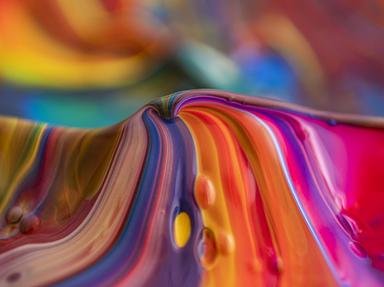Quiz Answer Key and Fun Facts
1. "Art is like a shipwreck .. it's everyman for himself." - Marcel Duchamp
In New York, in 1917, Henri Robert Marcel Duchamp stood a plumbing fixture on its back, signed "R. Mutt" to the left side of the plumbing fixture, paid a six dollar fee and submitted the plumbing fixture for inclusion in the first exhibition of the Society of Independent Artists under the title "Fountain". Mr. Duchamp was a founding member of the society. Although there is controversy over exactly how the entry was received, which of the following has been verified as factual?
2. "Whether Mr. Mutt with his own hands made the fountain or not has no importance. He chose it. He took an ordinary article of life, placed it so that its useful significance disappeared under a new title and point of view -- he created a new thought for the object." - Marcel Duchamp
Marcel Duchamp himself indicated that he chose to sign his sculpture "Fountain" with the name "Mutt" because J. L. Mott Ironworks manufactured "Fountain". Oddly, the artist's own explanation for choosing the name is widely disbelieved. What reasons have been given for disbelieving the "Mott" account?
3. "Society takes what it wants." - Marcel Duchamp
To which of the following schools of art could "Fountain" be most properly held to belong?
4. "The individual, man as a man, man as a brain, if you like, interests me more than what he makes, because I've noticed that most artists only repeat themselves." -- Marcel Duchamp
Marcel Duchamp estimated that he "made" more than 35 "readymades" - art pieces constructed from everyday objects. What was Duchamp's policy about exhibiting these items?
5. "But the onlooker has the last word, and it is always posterity that makes the masterpiece." - Marcel Duchamp
In 2004, the sponsors of Britain's most prestigious art award, the Turner prize, surveyed five hundred artists, curators, critics and art dealers regarding works of modern art. Duchamp's "Fountain" was accorded which of the following honors?
6. "Art is a habit-forming drug. That's all it is..." - Marcel Duchamp
In 2004, the sponsors of the Turner prize conducted the survey that resulted in Marcel Duchamp's "Fountain" receiving a prestigious award. Which of the following products does this sponsoring company manufacture?
7. "I don't believe in art. I believe in artists." - Marcel Duchamp
Five hundred artists, curators, critics and art dealers surveyed regarding works of modern art awarded the prize for modern art to Marcel Duchamp's "Fountain" - placing it front of such highly regarded masterpieces as Picasso's "Guernica" and Matisse's "The Red Studio". Which group's vote most strongly supported Duchamp's work?
8. "Art has absolutely no existence as veracity, as truth. People speak of it with great, religious reverence, but I don't see why it is to be so much revered. I'm afraid I'm an agnostic when it comes to art. I don't believe in it with all the mystical trimmings." - Marcel Duchamp
An analysis of twenty art books produced a list of the 100 Most Important Art Works of the Twentieth Century. Where did "Fountain" appear on that list?
9. "The artist himself does not count, because there is no actual existence for the work of art." - Marcel Duchamp
Where is the original "Fountain" being displayed?
10. "I am interested in ideas, not merely in visual products." - Marcel Duchamp
In what location would one expect to find a plumbing fixture of the same type as "Fountain"?
Source: Author
uglybird
This quiz was reviewed by FunTrivia editor
agony before going online.
Any errors found in FunTrivia content are routinely corrected through our feedback system.
